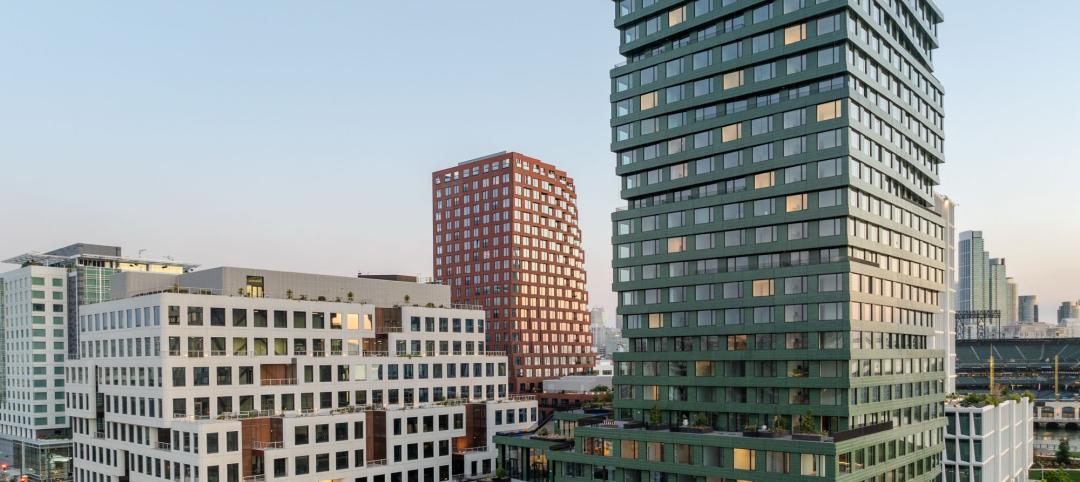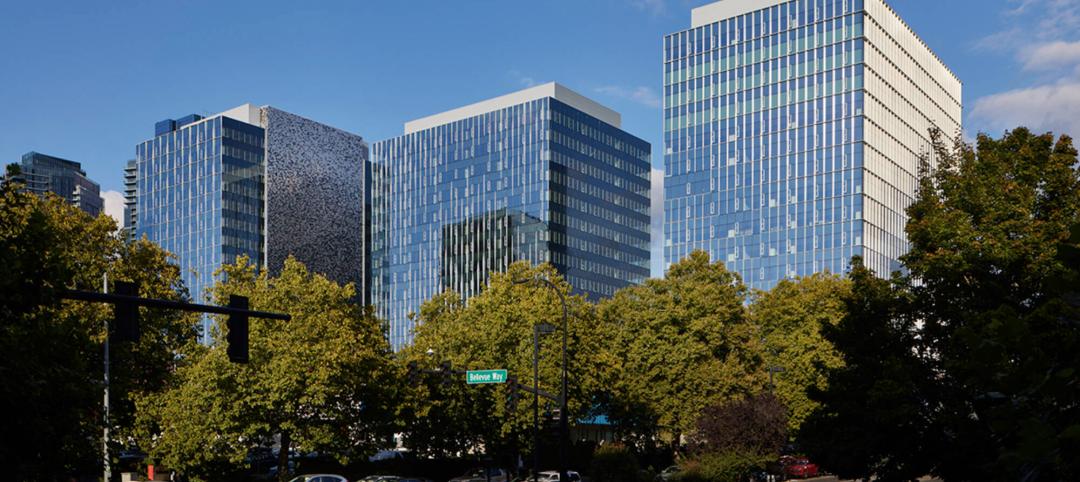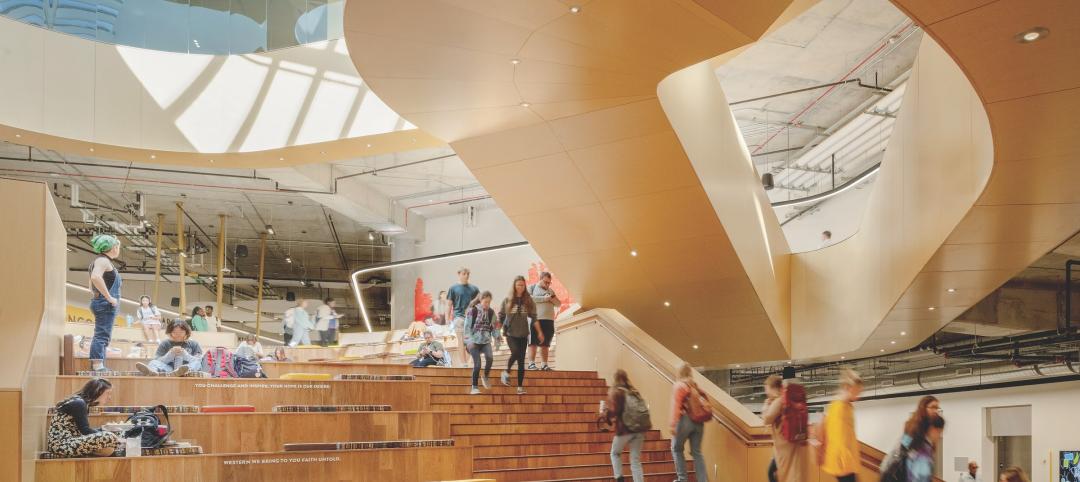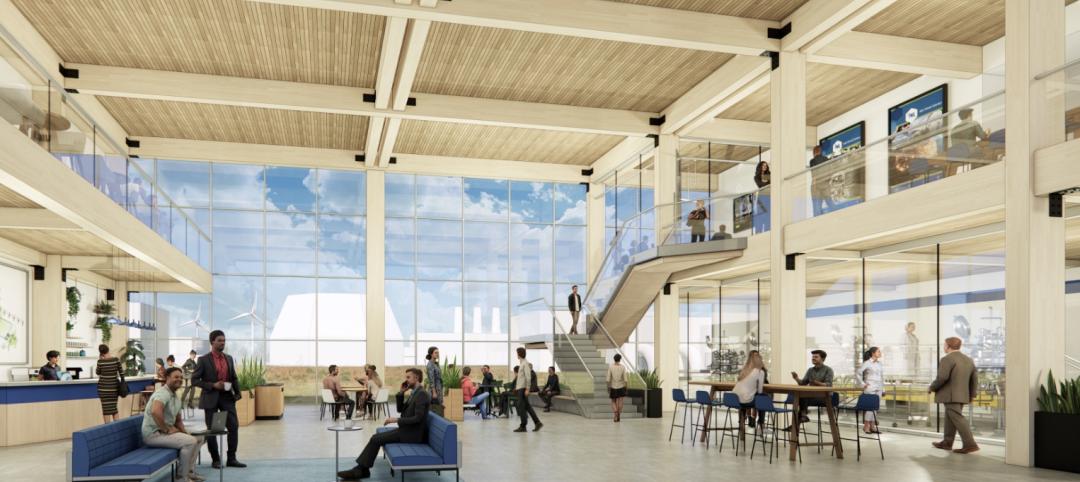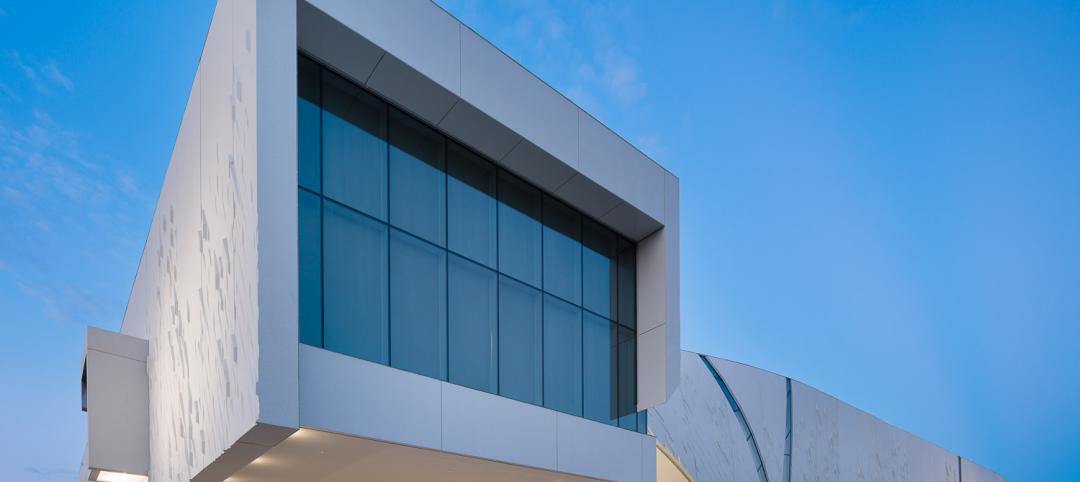China Mobile Ltd. selected international architecture, planning, engineering, interior design and program management firm LEO A DALY to design three buildings at its new international headquarters campus in Beijing.
In partnership with Local Design Institute WDCE, LEO A DALY won a competition to design Phase 2, Plot B, of the campus. The new international headquarters, which will be built in several phases in an area of 1.3 million square meters, consists of a campus of 26 specialized buildings to accommodate a variety of functions, including information collection, research and innovation, information services, international cooperation and exchange and display functions.
Phase 2, Plot B, of the campus, which totals 148,000 square meters near a green park space, consists of two research and development office and laboratory buildings, and a public facility building. As lead designer, LEO A DALY is providing the exterior design for the three buildings, interior design for the buildings’ major public spaces and landscape architecture while WDCE is providing interior design services for the rest of the spaces as well as all engineering work.
LEO A DALY’s design for the research and development office and laboratory buildings, each a five- and nine-story facility, are organized on an east-west pedestrian axis and mirrored in their massing to establish opposite, formal entries linked to internal courtyards at the ground level.
Each sculpted block features facades that convey the dynamic activity within by way of large, diagonal windows. The windows reveal perimeter stairs, which act as impromptu gathering steps with excellent views to the landscape. Central to LEO A DALY’s design concept is taking conventional, internal stairways typically found in research buildings’ central core zones and placing them on the perimeter in which employee brain storming activities may freely flow. This design approach of providing informal interacting zones is currently adopted by leading global research and technology firms whose goal is to support new work lifestyles preferred by younger generations.
The buildings feature fenestration that shades the external glass skin with copper-colored brise-soleil, graduated in color from dark at the bottom to light at the top, to visually ease the building’s mass and suggest an organic quality which links the building to the site. The two buildings are being designed with emphasis on reducing ecological and energy consumption impact. The buildings’ roofs provide sustainable landscape areas and are planted with grasses, annual and perennial materials and include some man-made materials (such as colorful rubber-based walking surfaces). The landscape for both perimeters and courtyards feature sculptural earth forms, fountains, pools, terraces and gardens.
A third, public facilities building is placed adjacent to the research and laboratory buildings in the campus’s central park and signature waterway. Within this building, recreation, food and beverage, light retail and central campus meeting facilities provide a multilevel, public place for both employees and China Mobile visitors. Its architecture is differentiated from the adjacent buildings by the portrayal of careful massing and purposeful sculpting of form, reinforced by diagonal fins which artfully echo the treatment of its neighbors. The cladding, materials and roofing of the facility incorporate a number of sustainable features, and are designed to meet Three Star Green Building standards (equivalent to LEED Platinum criteria), the highest rating for sustainable buildings in China. BD+C
Related Stories
AEC Tech Innovation | Oct 8, 2024
New ABC technology report examines how AI can enhance efficiency, innovation
The latest annual technology report from Associated Builders and Contractors delves into how artificial intelligence can enhance efficiency and innovation in the construction sector. The report includes a resource guide, a case study, insight papers, and an essay concerning applied uses for AI planning, development, and execution.
Healthcare Facilities | Oct 8, 2024
Herzog & de Meuron completes Switzerland’s largest children’s hospital
The new University Children’s Hospital Zurich features 114 rooftop patient rooms designed like wooden cottages with their own roofs. The project also includes a research and teaching facility.
Mixed-Use | Oct 7, 2024
New mixed-use tower by Studio Gang completes first phase of San Francisco waterfront redevelopment
Construction was recently completed on Verde, a new mixed-use tower along the San Francisco waterfront, marking the end of the first phase of the Mission Rock development. Verde is the fourth and final building of phase one of the 28-acre project that will be constructed in several phases guided by design principles developed by a design cohort led by Studio Gang.
Brick and Masonry | Oct 7, 2024
A journey through masonry reclad litigation
This blog post by Walter P Moore's Mallory Buckley, RRO, PE, BECxP + CxA+BE, and Bob Hancock, MBA, JD, of Munsch Hardt Kopf & Harr PC, explains the importance of documentation, correspondence between parties, and supporting the claims for a Plaintiff-party, while facilitating continuous use of the facility, on construction litigation projects.
Glass and Glazing | Oct 7, 2024
Pattern language: An exploration of digital printing on architectural glazing
Architectural Glazing has long been an important expressive tool which, when selected and detailed thoughtfully, can contribute to the successful transformation of architectural concepts to reality.
University Buildings | Oct 4, 2024
Renovations are raising higher education campuses to modern standards
AEC higher ed Giants report working on a variety of building types, from performing arts centers and libraries to business schools. Hybrid learning is seemingly here to stay. And where possible, these projects address wellness and mental health concerns.
AEC Tech | Oct 3, 2024
4 ways AI impacts building design beyond dramatic imagery
Kristen Forward, Design Technology Futures Leader, NBBJ, shows four ways the firm is using AI to generate value for its clients.
Laboratories | Oct 2, 2024
Trends in scientific research environments: Q&A with Flad's Matt McCord
As part of an ongoing series, Matt McCord, AIA, NCARB, LEED AP BD+C, Associate Principal with Flad Architects, discusses the future of the scientific workplace.
Museums | Oct 1, 2024
UT Dallas opens Morphosis-designed Crow Museum of Asian Art
In Richardson, Tex., the University of Texas at Dallas has opened a second location for the Crow Museum of Asian Art—the first of multiple buildings that will be part of a 12-acre cultural district. When completed, the arts and performance complex, called the Edith and Peter O’Donnell Jr. Athenaeum, will include two museums, a performance hall and music building, a grand plaza, and a dedicated parking structure on the Richardson campus.
Data Centers | Oct 1, 2024
10 biggest impacts to the data center market in 2024–2025
While AI sends the data center market into the stratosphere, the sector’s accelerated growth remains impacted by speed-to-market demands, supply chain issues, and design innovation necessities.





